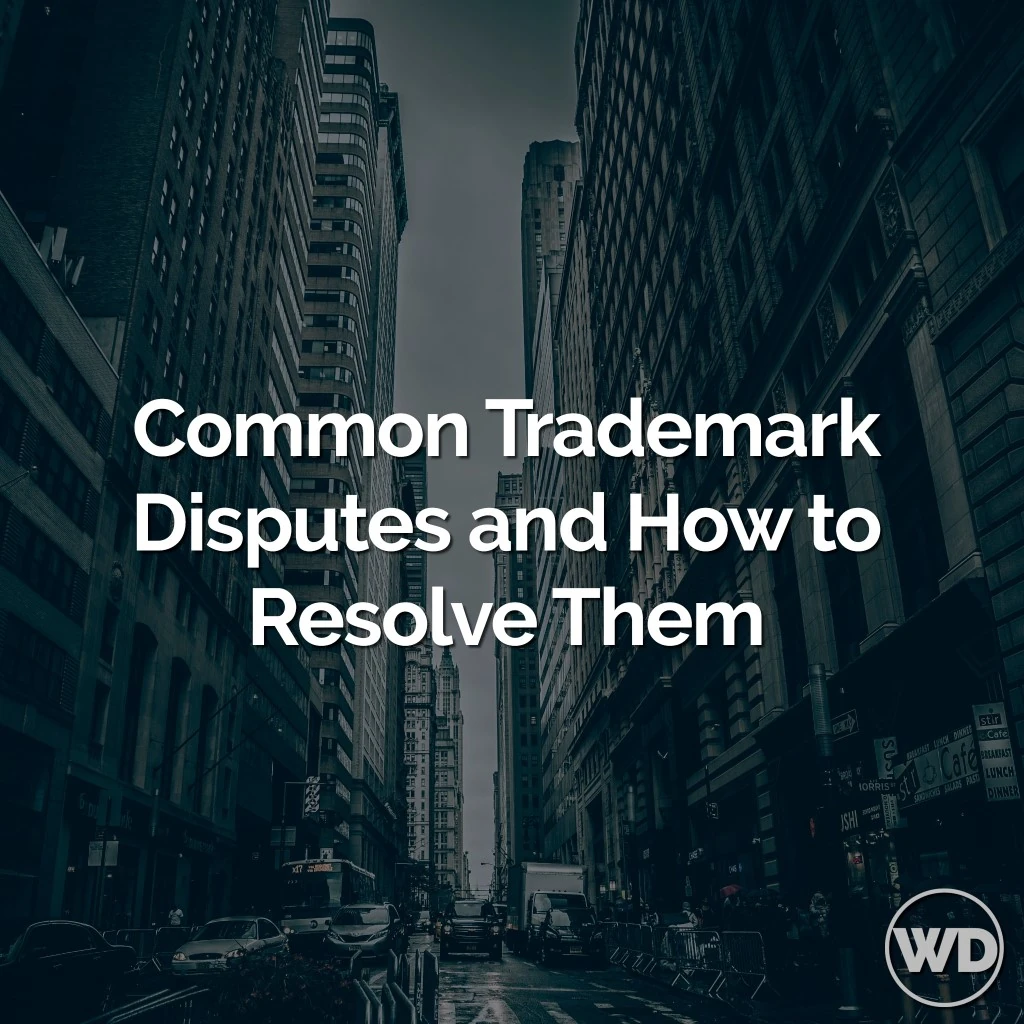In this article:
Fast overview of trademark opposition, cancellation, and litigation processes.
Alternative dispute resolution methods including mediation.
Common Trademark Disputes and How to Resolve Them: Opposition, Cancellation, Litigation, and Alternative Dispute Resolution
S01-E011
3 Common Trademark Disputes and How to Solve Them Now
Listen to this article as a fast 10-minute podcast.
Trademark disputes can arise at any stage of the registration or use of a trademark. Whether it’s a conflict over a newly filed trademark application, challenges to an existing registration, or allegations of infringement, understanding the common types of trademark disputes and how to resolve them is crucial for any business. Trademark disputes can be costly, time-consuming, and damaging to a brand if not handled correctly. This section provides an overview of the most common types of trademark disputes—opposition, cancellation, and litigation—and discusses alternative dispute resolution methods like mediation that can help avoid lengthy court battles.
Overview of Trademark Opposition, Cancellation, and Litigation Processes
Trademark disputes typically arise in one of three ways: during the application process (opposition), after a trademark has been registered (cancellation), or through claims of infringement or misuse (litigation). Each of these processes has distinct legal requirements and procedures, and resolving them successfully depends on understanding the specifics of each.
1. Trademark Opposition:
The trademark opposition process allows third parties to challenge a trademark application before it becomes registered. After a trademark is published in the Official Gazette (the USPTO’s weekly publication), there is a 30-day window during which anyone who believes the trademark will harm their business can file an opposition. An opposition is typically based on claims such as:
– The trademark is too similar to an existing trademark and may cause confusion.
– The mark is descriptive, generic, or otherwise non-distinctive.
– The applicant has no real intention to use the trademark in commerce.
The opposition process is handled by the Trademark Trial and Appeal Board (TTAB), a USPTO administrative body. The opposing party must file a Notice of Opposition, outlining the reasons they believe the mark should not be registered. The applicant has the opportunity to respond, and the case proceeds like a mini-trial, including the submission of evidence and legal arguments. The TTAB will issue a decision to either approve or deny the trademark registration based on the merits of the case.
2. Trademark Cancellation:
Even after a trademark is registered, it can still be challenged through a cancellation proceeding. A cancellation can be filed by any party who believes the trademark should not have been registered or is no longer valid. Common grounds for cancellation include:
– The trademark was not in use at the time of registration (or has since been abandoned).
– The trademark is too similar to an earlier registered mark.
– The trademark has become generic over time and no longer serves as a brand identifier.
Like opposition proceedings, cancellation actions are handled by the TTAB. To initiate a cancellation, the challenging party files a Petition for Cancellation, and the trademark owner has the opportunity to defend the registration. The process may involve discovery (the exchange of evidence), legal briefs, and oral arguments, after which the TTAB makes a decision.
3. Trademark Litigation:
Trademark litigation refers to formal lawsuits filed in court, typically involving claims of trademark infringement. Infringement occurs when one party uses a trademark that is confusingly similar to an existing registered trademark, causing consumer confusion or diluting the strength of the original mark. Unlike opposition and cancellation, which are handled administratively by the TTAB, litigation takes place in federal court and is governed by the Lanham Act.
Trademark litigation can be initiated by the owner of a registered trademark who seeks to stop the infringer from continuing to use a similar mark. Remedies in a trademark lawsuit can include:
– Injunctions: Court orders that require the infringer to stop using the mark.
– Monetary damages: Compensation for financial losses caused by the infringement, including lost sales or profits gained by the infringer.
– Destruction of infringing goods: The court may order the infringing party to destroy any products or materials bearing the unauthorized trademark.
Trademark litigation can be costly and time-consuming, often requiring extensive legal discovery, expert testimony, and trial proceedings. As such, many businesses seek to avoid litigation through alternative means.
Alternative Dispute Resolution Methods like Mediation
While trademark disputes can escalate to formal litigation, many parties prefer to resolve their conflicts through alternative dispute resolution (ADR) methods. ADR includes mediation, arbitration, and negotiation, which can offer faster, less expensive, and less adversarial solutions compared to traditional litigation. These methods allow parties to retain more control over the outcome and often lead to mutually beneficial agreements.
1. Mediation:
Mediation is one of the most commonly used methods of resolving trademark disputes. In mediation, a neutral third party (the mediator) facilitates discussions between the disputing parties in an effort to reach a voluntary settlement. The mediator does not impose a decision but instead helps the parties negotiate and find common ground.
Benefits of mediation include:
– Cost-effectiveness: Mediation is generally much less expensive than litigation.
– Confidentiality: The mediation process is private, which can protect sensitive business information from becoming public.
– Speed: Mediation typically resolves disputes more quickly than the court system.
– Flexibility: The parties have more control over the outcome and can craft creative solutions that a court might not be able to order, such as licensing agreements or co-existence arrangements.
Mediation is particularly effective in trademark disputes where both parties want to avoid the uncertainty of a court decision and are willing to negotiate a resolution.
2. Arbitration:
Arbitration is another form of ADR, where a neutral third party (the arbitrator) hears the evidence and arguments from both sides and makes a binding decision. Unlike mediation, arbitration results in a formal ruling, which the parties must abide by. While arbitration can be quicker and less formal than litigation, it shares some similarities with the court process, including the submission of evidence and legal arguments.
Arbitration is often used when parties have agreed to an arbitration clause in their business contracts. While it can be more structured than mediation, arbitration still offers a quicker and more cost-effective resolution than litigation.
3. Settlement Negotiation:
In some cases, parties may be able to resolve their trademark disputes through direct negotiation without involving a mediator or arbitrator. Settlement negotiations can result in various outcomes, such as:
– Co-existence agreements: Where both parties agree to use similar trademarks in different geographic regions or markets.
– Licensing agreements: Where one party agrees to pay the trademark owner for the right to use the mark under specific terms.
– Cease-and-desist agreements: Where the infringer agrees to stop using the mark without the need for further legal action.
Negotiated settlements often provide more flexibility and control over the outcome compared to litigation, and they can preserve business relationships by avoiding the hostility of a courtroom battle.
Conclusion – Common Trademark Disputes and How to Resolve Them
Trademark disputes are common, but businesses can take proactive steps to resolve them efficiently. Whether through opposition, cancellation, litigation, or alternative dispute resolution methods like mediation, the key is to address trademark conflicts promptly and strategically. While litigation offers powerful remedies, it is often the last resort due to its expense and complexity. In many cases, mediation or negotiation can provide a faster, more amicable resolution that preserves business interests while protecting trademark rights. By understanding the different dispute resolution processes and exploring all available options, businesses can effectively protect their trademarks and navigate disputes with confidence.
Use LegalZoom to register your trademark and protect against competitor infringement.





